
La Bosse de Clapouse
"In the enchanting light of the larch undergrowth, mesmerised by the playful tree keepers that searched the tree trunks at breath taking speed looking for the odd insect that might be hidden in a crack of the bark, I had not even noticed the female grouse that was resting on a low branch. We spotted each other with mutual surprise. The magic led to the noisy departure of the bird. I was the trespasser"
Christophe Albert, warden in the Vallouise area
Description
From the car park, walk up the Sélé valley by the footpath that follows the left bank of the Celse Nière stream.
- At the post, 1572 m, cross the footbridge over the stream to the left. (It is taken down from November to June) Go up the right bank of the stream by the Clapouse footpath, then head diagonally to the left to meander up the slopes alternating through larch and green alder. The route then ingeniously leads to the ledges and crosses ravines before coming to the Clapouse valley. La Bosse (the bump) is the small summit that is reached by following a footpath.
- The return trip is made by the same itinerary in the opposite direction.
- Departure : Ailefroide
- Towns crossed : Vallouise-Pelvoux
Altimetric profile
Recommandations
On this sometimes-steep footpath, the footbridge across the Celse Nière stream is dismantled from November to June. No camping after Ailefroide, bivouac permitted at least an hour's walk away from the park boundaries. No fires.
Information desks
Vallouise Park house
, 05290 Vallouise
Information, documentation, models, exhibitions, screenings, product sales and works of the Park. Guided tours for school, reservation required. The new Park House opened in Vallouise since June 1, and offers visitors an interactive permanent exhibition inviting to explore the area and its heritage. A temporary exhibition space will allow a renewed offer. Finally, the device is completed by an audiovisual room to organize screenings and conferences Free admission. All animations of the Park are free unless otherwise stated.
Transport
SNCF railway station in l'Argentière-la-Bessée then shuttle to Ailefroide during the summer season (reserve 36 hours in advance at 05voyageurs or call 04 92 502 505.
Access and parking
From the N94 in L'Argentière, head towards Vallouise, then Pelvoux. You will then reach the hamlet of Ailefroide by the D994F
Parking :
Sensitive areas
Golden eagle
- Impacted practices:
- Aerial, , Vertical
- Sensitivity periods:
- JanFebMarAprMayJunJulAug
- Contact:
- Parc National des Écrins
Julien Charron
julien.charron@ecrins-parcnational.fr
16 points of interest
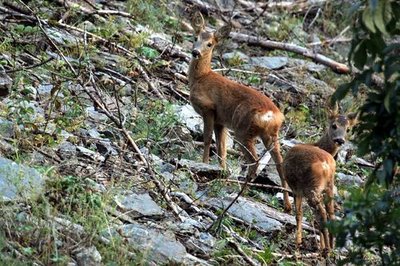
Deux chevrettes du printemps - Jean-Philippe Telmon - PNE  Fauna
FaunaRoe Deer
Hidden in the larch forest, the Roe Deer sometimes shows its fine head at dawn or at dusk. Not always easy to see this discreet animal but a few tracks or droppings can give its presence away.: the heart shaped print of its delicate hooves, the trunks of shrubs nicked by young fallow deer rubbing new antlers there to remove the last shreds of velvet, Sometimes it is a deep sonorous and guttural bark that resonates in the woods.
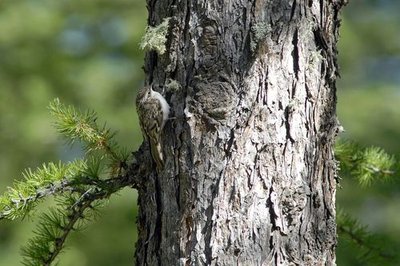
Grimpereau des bois - Mireille Coulon - PNE  Fauna
FaunaEurasian Tree Creeper
The Eurasian Tree Creeper is a small, compact and agile bird. Its beak is long and curved and its tail is composed of stiff feathers. Its long claws have sharp nails. So many adaptations enabling it to explore the bark of the larch trees where it hunts for insects and other spiders which make up its diet all through the year.

Pouillot de Bonelli - Mireille Coulon - PNE  Fauna
FaunaWestern Bonelli’s Warbler
This common little sparrow is rarely seen but often heard. It interprets a brief song lasting just a few seconds, with around ten repetitive notes, which quickly become identifiable, rather haunting. The male sings almost throughout the year, from April to July, then only in the morning in July. After the storm when the trees are still dripping with rain, he starts singing immediately. At the end of August males et females leave for the African savannah forest regions, followed by that years young.
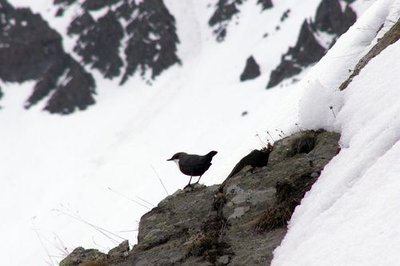
Cincle plongeur dans la neige - Christophe Albert - PNE  Fauna
FaunaWhite Throated Dipper
Stocky, short tail, tapered beak, the White Throated Dipper is often perched in the middle of a torrent, on a boulder at water level. Recognizable by the white mark on its chin and chest and the rest of its red and slate grey plumage, this bird dives in the icy water looking for aquatic larvae which are the essential ingredient of its menu.
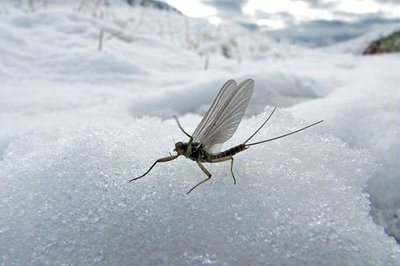
Epeorus sur la neige - Christophe Albert - PNE  Fauna
FaunaEpeorus
This beautiful insect skims the water surface to lay its eggs, which will develop into aquatic nymphs. These can live for up to two years in the stream before metamophosing into a perfectly formed insect, the imago, which will only live for a few days - it is incapable of feeding itself - but will reproduce in that time.
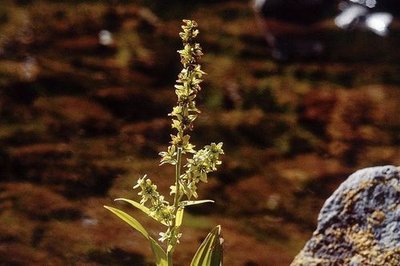
Vératre blanc - PNE  Flora
FloraWhite hellebore
The white hellebore is a plant which seems at first sight to be entirely green, but as you get nearer you can make out its greenish-white flowers. Its large, broad leaves alternate along the stem, which differentiates it from the gentian which has opposing leaves. It is important for home-made aperitif lovers to tell them apart because although gentian roots can be used to make a beverage loved by mountain-dwellers, the roots of the hellebore are poisonous.
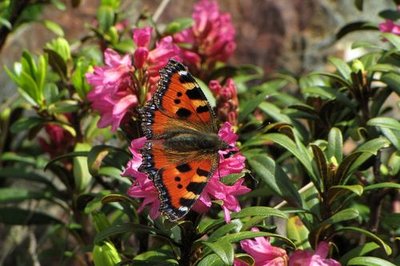
Petite tortue sur rhododendron ferrugineux - Christophe Albert - PNE  Fauna
FaunaSmall tortoiseshell
Nothing at all like the shelled reptile, this creature has rather flamboyant colouring. It sports bright orange wing uppers, inlaid with ebony and edged with black-bordered blue crescents. Appearing early in the year, the small tortoiseshell is the first butterfly to be seen fluttering around the flowers just as they emerge from the snow on the sunniest mountain slopes.

Tichodrome échelette femelle - Mireille Coulon - PNE  Fauna
FaunaWallcreeper
The wallcreeper inspects the rock face by latching on to it with long efficient claws. Its long thin beak enables it to capture the best-hidden insects in the tiniest of cracks in the rock. This capacity is only equalled by its deep red feathers that make it seem like a butterfly, as it performs its airborne acrobatics.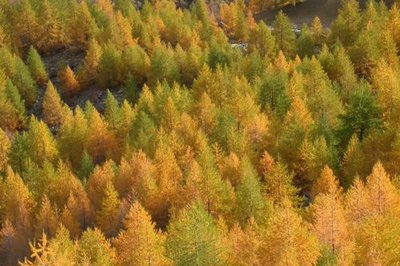
Les couleurs du mélézin - Christophe Albert - PNE  Flora
FloraThe larch forest
They form a welcoming forest which changes appearance with the seasons: a soft green in spring changing to a golden russet in autumn, it is slender and bare when the valley is blanketed with snow. Always light-filled, the larch forest attracts flocks and walkers, filters the sunlight for them and encourages vegetation and abundant flowers.
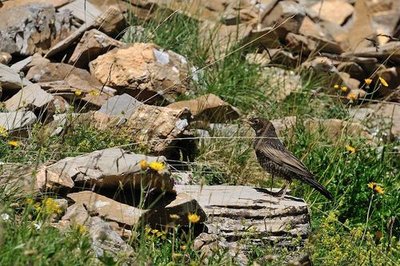
Jeune merle à plastron - Mireille Coulon - PNE  Fauna
FaunaThe ring ouzel
The ring ouzel is easily identifiable: it sports the same plumage as the black ouzel but is distinguished from it by a large white bib on its breast and light edges on the feathers of its wings and underside. This shy, swift-flying mountain-dwelling ouzel lives on the edges of forests of larch, Scots pine, spruce and Swiss pine, at altitudes of between 1,000 and 2,500 metres.
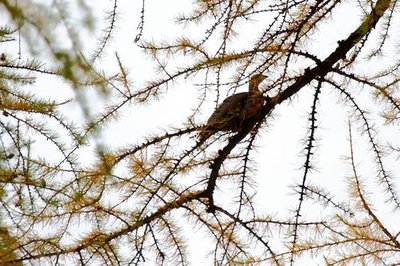
Poule tétras lyre branchée - Christophe Albert - PNE  Fauna
FaunaBlack grouse
Present from 1,200 metres above sea level, in France the black grouse is only found in the Alps. The male can be recognised by its distinctive black plumage and lyre-shaped tail, which explains its French name, tétras lyre. While it spends a large part of the winter taking refuge from the cold in igloos dug into the snow, when spring comes the male executes spectacular displays to attract the hens.

Orpin des infidèles - PNE  Flora
FloraLove-restorer
Some plants trail at your feet while others rise up to the sky. The love-restorer is one of the former. Its thick leaves form small scattered rosettes between the boulders of the big scree across which the path winds. Its numerous little wine red flowers are arranged together at the top of the stem.

 Flora
FloraScrees
For the botanist, screes are a mosaic of highly contrasting and interconnected environments. Plants from the surrounding habitats share out this territory between them, exploiting the smallest islets of humus. Course screes, defined by their stability, are distinguished from fine screes which are constantly shifting due to the small elements (gravel, sand, silt).
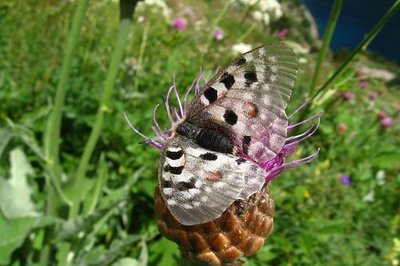
Apollon sur rhapontique scarieux - Cyril Coursier - PNE  Fauna
FaunaApollo
The Apollo is a large protected butterfly, its wings translucent white and dotted with black spots and with four bright red eye-spots. It needs the heat of the sun in order to fly. When a cloud passes, it settles on a cardoon or some thistle or other to enjoy its nectar. Loss of habitat and abnormally warm winters have led to its disappearance from some regions of France. By preference, it appears to make its home in the screes devoid of any dense vegetation.

Gentiane ponctuée - Christophe Albert - PNE  Flora
FloraSpotted gentian
The spotted gentian, like its big sister the yellow gentian, can be recognised by its upright bearing and its yellow flowers. The flowers differ, however, in that they are speckled with brown and are carried within the leaf axils. Growing in small groups, the gentian extends from the Alps to the Carpathian Mountains and colonises screes in the company of other species that favour stony terrain and wide-open spaces.
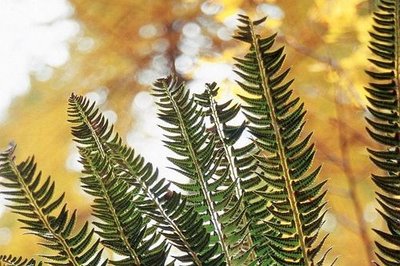
Polystic en forme de lance - Bernard Nicollet - PNE  Flora
FloraHolly-fern
This slender, upright and tough fern thrives in rough screes where it finds a foothold in the cool crevices created by the scattered rocks and boulders. It was regarded as a particularly beneficial plant in the Middle Ages. Capable of curing all ills, it was also attributed with divine status: wherever it grew, thunder and lightning could not strike and the Devil himself would be thwarted!
Source

Report a problem or an error
If you have found an error on this page or if you have noticed any problems during your hike, please report them to us here:


